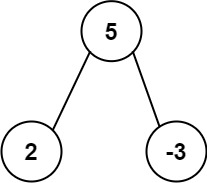2022-06-19
Description
Given the root of a binary tree, return the most frequent subtree sum. If there is a tie, return all the values with the highest frequency in any order.
The subtree sum of a node is defined as the sum of all the node values formed by the subtree rooted at that node (including the node itself).
Example 1:

Input: root = [5,2,-3]
Output: [2,-3,4]Example 2:

Input: root = [5,2,-5]
Output: [2]Constraints:
The number of nodes in the tree is in the range
[1, 10^4].-10^5 <= Node.val <= 10^5
Solution
Approach #0
Last updated